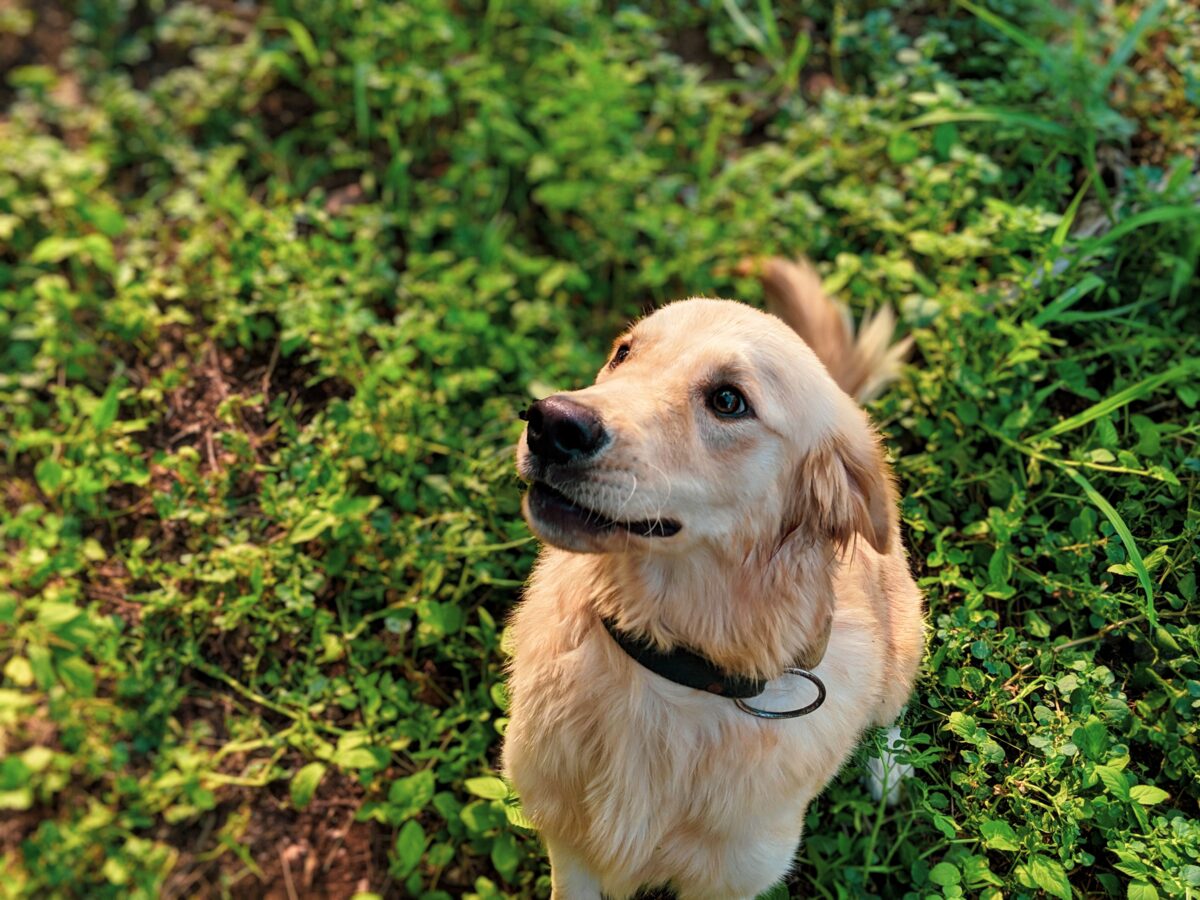Introduction
The Labrador Retriever is one of the most popular dog breeds in the world, and for good reason. Often described as friendly, loyal, and eager to please, the Lab has endeared itself to millions of families as a wonderful pet and companion. This article provides a comprehensive overview of the Labrador Retriever breed, including its history, characteristics, care requirements, health issues, and suitability as a family dog. Whether you’re considering adding a Lab to your home or simply want to learn more about this remarkable breed, read on for an in-depth guide to Labrador Retrievers.
A Brief History of the Labrador Retriever
The Labrador Retriever originated in Newfoundland, Canada where it was used by fishermen to retrieve fish and pull in nets. References to the “Lesser Newfoundland” or “St. John’s Dog” can be traced back to the late 1700s. The breed’s swimming and retrieving abilities made it ideally suited for work near the water. Labs were later brought to England where they gained popularity among British nobles for their skill in hunting waterfowl.
The Labrador Retriever was first recognized by the American Kennel Club (AKC) in 1917. Following World War II, the breed’s intelligence, trainability, and gentle temperament gained wider notice. Today, the Labrador Retriever continues to be the most registered breed by the AKC and is a beloved family companion around the world.
Characteristics of the Labrador Retriever
Labrador Retrievers are medium-large dogs, typically weighing 55 to 80 pounds and standing 21.5 to 24.5 inches tall at the shoulder. They have a strong, athletic build and otter-like tail suited for swimming. The Lab’s short, dense coat comes in three colors: black, yellow, and chocolate.
The most defining characteristics of the Lab are its friendly, outgoing personality and high intelligence. Labs are sociable, affectionate, and eager to please. They form strong bonds with their human families and get along well with children and other pets. The breed is smart, responsive to training, and highly adaptable to different environments. Labs also exhibit patience, loyalty, and a playful sense of humor.
Caring for a Labrador Retriever
Despite their easygoing nature, Labrador Retrievers are active dogs with high exercise requirements. They need 30 to 60 minutes of vigorous activity per day along with opportunities to swim and retrieve. Without adequate exercise, Labs are prone to weight gain and destructive behavior. Mentally stimulating games and toys are also important for this intelligent breed.
| Recommended Exercise Duration | Details |
|---|---|
| 30-60 minutes per day | The article recommends Labs get 30-60 minutes of vigorous exercise daily. This helps meet their high activity needs. |
| Mental stimulation | In addition to physical exercise, the article advises providing mental stimulation through training games and puzzles. This engages their intelligence. |
| Opportunities to swim & retrieve | The article specifically highlights the importance of allowing Labs opportunities to swim and retrieve, two activities they love and are bred for. |
| Exercise caution in heat | When exercising in hot weather, the article recommends being cautious and limiting intense exercise to prevent overheating. |
| Adjust for age & health | Exercise duration and intensity should be adjusted for a Lab’s age and any health limitations to avoid overexertion. |
| Mix up activities | Varying activities keeps exercise interesting and enjoyable for Labs. Mix up walks, swimming, fetch, training, etc. |
Labs have short, wash-and-wear coats that require minimal grooming. Occasional brushing and bathing as needed is usually sufficient. Their floppy ears should be checked regularly for signs of infection. Labs are average shedders and do “blow” their coats twice a year. Regular vacuuming is advised during shedding seasons.
Early socialization and training are highly recommended for Lab puppies. Obedience training and behavioral management should continue through adulthood. Labs are food motivated and respond well to positive reinforcement techniques. Their outgoing nature makes them very trainable when properly motivated.
Common Health Issues in Labs
Labrador Retrievers are predisposed to certain health conditions, including:
- Hip and Elbow Dysplasia – Malformation of these joints can lead to arthritis and lameness. Reputable breeders screen breeding dogs.
- Eye Disorders – Issues like cataracts, progressive retinal atrophy, and retinal dysplasia can cause vision loss or blindness. Annual vet exams are important.
- Ear Infections – Floppy ears and love of water make Labs prone to infections. Regular cleaning and drying of ears is advised.
- Obesity – Tendency to overeat coupled with love of food makes weight control essential. Stick to a feeding schedule and proper portions.
- Bloat – Rapid eating then exercise can cause this life-threatening stomach condition. Use slow feed bowls and rest after meals.
- Allergies – Food, contact, and inhalant allergies are common. Symptoms include itchy skin, ear infections, and hot spots.
- Joint Problems – Elbow and hip dysplasia can lead to arthritis in older Labs. Joint supplements may help.
With proper care, regular vet checkups, and a healthy lifestyle, many Labs live 10 to 14 years or longer. Choosing a puppy from health-tested parents can help minimize risk of inherited conditions.
Is a Lab Right for You?
Before bringing home a Labrador Retriever puppy or adult dog, consider if the breed is a good match for your lifestyle and family situation. Key things to think about include:
- Activity Level – Labs need lots of exercise and mental stimulation. Are you an active household? Do you enjoy outdoor activities?
- Space Requirements – Labs are medium-large dogs that do best with room to move. Is your home or yard large enough?
- Time Commitment – These are people-oriented dogs who don’t do well left alone for long periods. Do you have time to properly care for and exercise a Lab?
- Training – Early socialization and obedience training are musts for this intelligent breed. Are you prepared to invest time and effort on training?
- Grooming – Labs have wash-and-wear coats but do shed seasonally. Are you okay with vacuuming dog hair regularly?
- Veterinary Costs – Health clearances, preventatives, food, and supplies add up. Is your budget Lab-friendly?
If you can meet a Lab’s needs for exercise, training, companionship, and quality veterinary care, you’ll find an exceptionally loyal, fun-loving dog suited to an active family lifestyle. For the right household, a Lab can make a wonderful pet and lifelong companion.
Finding Your Perfect Labrador Retriever
Once you’ve decided a Labrador Retriever is the right breed for you, the next step is finding a dog or puppy to join your family. There are a few options:
- Breeders – Seek out responsible breeders who health test their dogs and breed for sound temperament. Expect to pay $1,000 to $2,500+ for a well-bred Lab puppy.
- Rescue/Shelters – Labs end up in shelters and breed rescues through no fault of their own. Adoption fees typically range from $50 to $500.
- Classified Ads – Use caution if considering this option, as you won’t know a dog’s background or health status.
When selecting a Lab puppy or adult, look for indications of good health, proper socialization, and a temperament typical of the breed. If possible, observe the dog interacting with people and other animals. Labs should show interest and confidence, not fear or aggression.
No matter where you acquire your Lab, be sure you can review health clearances and veterinary records. A responsible breeder or rescue will provide this documentation.
Bringing Home Your Labrador Retriever
The first weeks with your new Labrador Retriever are an important transition period. To help your dog settle in smoothly:
- Puppy-proof your home by removing hazards and securing valuables. Supervise or confine your pup when you can’t actively watch them.
- Establish a predictable daily routine including feeding times, potty breaks, training sessions, play time, and walks. Labs thrive on structure.
- Begin socializing your puppy or adult dog right away. Introduce them positively to new places, people, animals, and experiences.
- Start training early and be consistent. Use positive reinforcement and keep sessions short and fun. Focus on basic cues like sit, stay, come, down, and leash walking.
- Give your Lab time to decompress. Moving to a new home is exciting but stressful for dogs. Make sure they have a quiet space to rest and relax.
The first few weeks are all about building a strong foundation through routine, socialization, and training. With time and patience, you’ll form an incredible bond with your Labrador Retriever!
Frequently Asked Questions About Labrador Retrievers
Q: Are Labrador Retrievers good family dogs?
A: Yes! Labs are widely considered one of the best family-friendly breeds. They form close bonds with household members, relate wonderfully to kids, and get along with other pets when properly socialized. Their affectionate, people-pleasing nature makes them a top choice for families.
Q: How much exercise does a Labrador Retriever need?
A: Labs are high-energy dogs bred for physically demanding jobs. They require 30 to 60 minutes of vigorous exercise daily, plus opportunities to swim and play fetch. Young and active Labs may need even more. Mental stimulation through training and puzzle toys is also key.
Q: Do Labrador Retrievers bark a lot?
A: Labs are not excessive barkers, but they will vocalize to alert their owners to visitors, solicit play, or out of boredom. Ensure your Lab gets adequate exercise and attention to prevent nuisance barking. Training “quiet” cues can also help manage vocalizing.
Q: Are Labrador Retrievers easy to train?
A: Yes, Labs are highly intelligent, food motivated, and eager to please. They respond extremely well to positive reinforcement training and consistent leadership. Their trainability makes them excellent candidates for therapy work, service roles, and competitive canine sports.
Q: How much grooming do Labrador Retrievers require?
A: Labs have short, dense coats that require minimal grooming. Occasional brushing, bathing only when needed, ear cleaning, nail trims, and tooth brushing is typically sufficient. Expect heavier seasonal shedding twice a year when their coats “blow.”
The Remarkable Labrador Retriever
Few breeds can match the Labrador Retriever when it comes to being an ideal family companion. Labs are the whole package: intelligent, friendly, playful, gentle, and adaptable. They make wonderful pets, service dogs, guide dogs, detection dogs, search and rescue dogs, and more. With their affectionate nature and enthusiasm for life, it’s no wonder Labrador Retrievers consistently rank as one of the most beloved breeds worldwide.
We hope this comprehensive guide gave you a detailed overview of the Lab’s history, traits, care needs, health concerns, and suitability for families. Use the information and tips provided to find your perfect Labrador Retriever and form an unbreakable bond built on trust, respect, and lots of sloppy doggy kisses!


